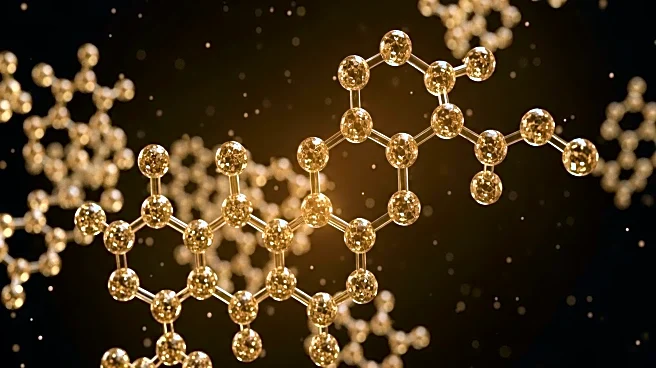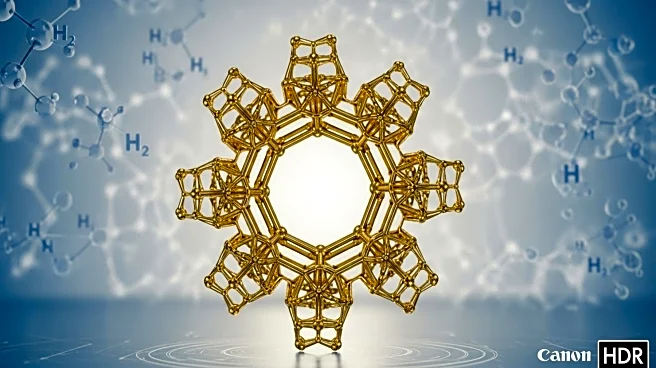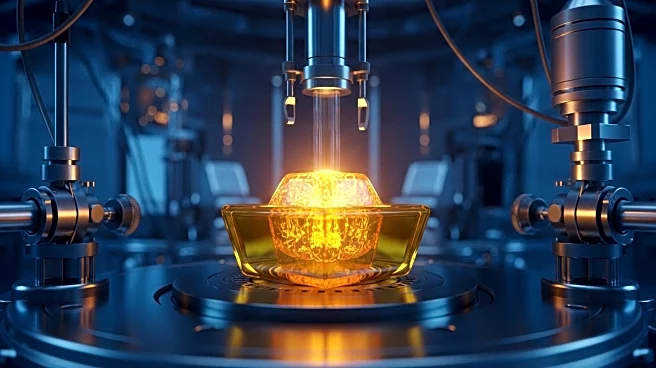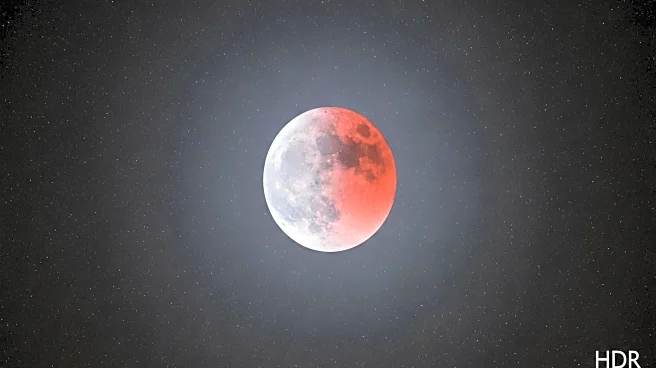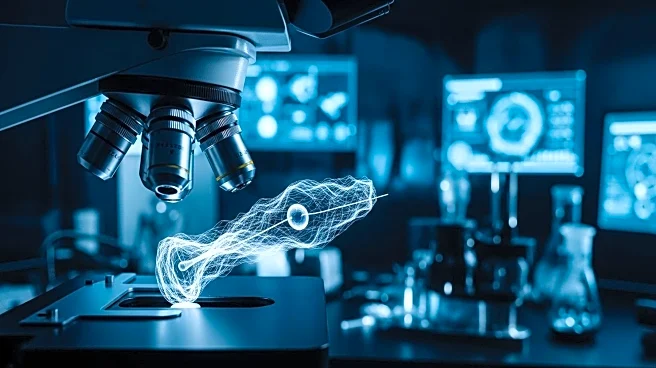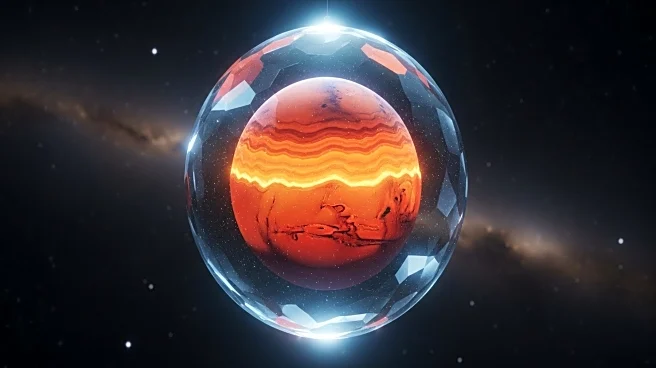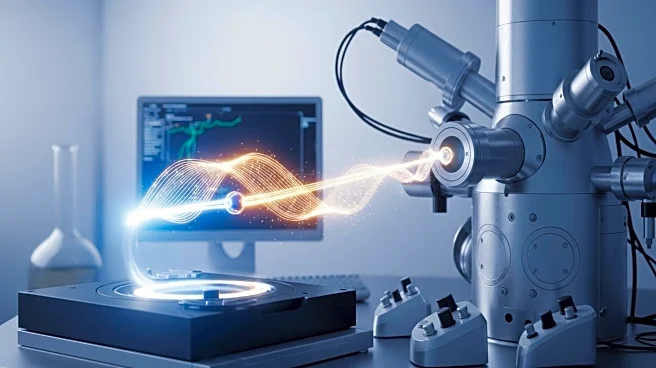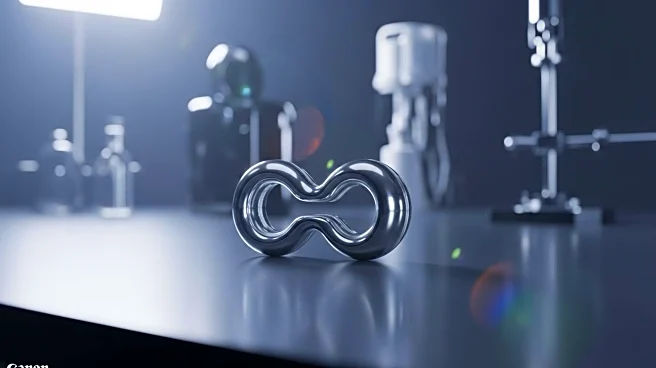What's Happening?
Researchers at the SLAC National Accelerator Laboratory have accidentally created a new compound, solid binary gold hydride, composed solely of gold and hydrogen atoms. This discovery occurred during experiments aimed at understanding the transformation of hydrocarbons into diamonds under extreme pressure and heat. The unexpected formation of gold hydride suggests new chemistry possibilities under extreme conditions, such as those found deep inside planets or within hydrogen-fusing stars. The findings, published in Angewandte Chemie International Edition, highlight how chemical behavior can shift dramatically under such environments.
Why It's Important?
The creation of gold hydride opens new avenues for studying dense hydrogen, which is significant for understanding the interiors of certain planets and nuclear fusion processes inside stars. This research could also aid in developing technology to harness fusion energy on Earth. The ability to form stable hydrides at high pressure and temperature challenges conventional views of gold as an unreactive metal, suggesting potential for discovering other exotic compounds under extreme conditions.
What's Next?
The research team plans to extend their simulation framework beyond gold hydride to model other exotic material properties in extreme conditions. This could lead to further discoveries in the field of high-pressure chemistry and materials science, potentially impacting energy production and planetary science.
